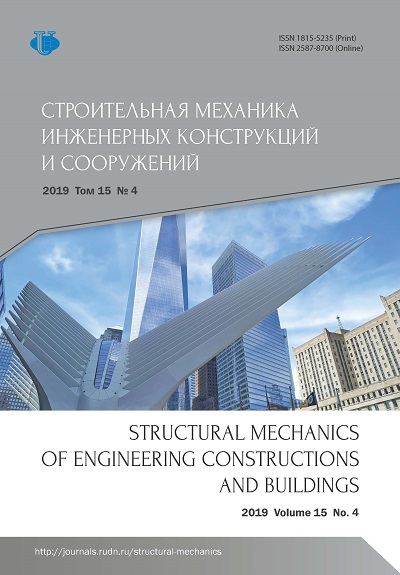Methods of analysis and risk assessment of accidents of hydraulic structures
- Authors: Lyapichev Y.P.1
-
Affiliations:
- Hydroproject Institute (Joint Stock Company)
- Issue: Vol 15, No 4 (2019)
- Pages: 327-336
- Section: Dynamics of structures and buildings
- URL: https://journals.rudn.ru/structural-mechanics/article/view/21811
- DOI: https://doi.org/10.22363/1815-5235-2019-15-4-327-336
Cite item
Full Text
Abstract
Relevance of the research is due to the fact that over the past 10 years severe accidents at large hydropower plants and dams occurred in Russia (SayanoShushenskaya HPP, 2009), USA (Oroville dam, 2018), Brazil (Brumadinho dike, 2019), Colombia (HPP Ituango, 2018) and other countries, the need has arisen to improve the safety programs of the HS and dams. The main method of this important work is to use methods of analysis and assessment of risk accidents of HS and dams. Methods of this important work are to develop modern methodology for analyzing and assessing the risk of accidents of HS and dams. The introduction of the method of analysis and risk assessment in the safety programs of hydraulic structures (dams) in countries that are advanced in the construction of HS (China, Brazil, Canada, USA, Russia, Colombia, Norway, Spain, etc.) shows that in applying risk assessment analysis accidents of HS and dams still a number of difficulties, but this approach is of great benefit in monitoring the safety of HS and dams. The aim of this article is to familiarize and train specialists and hydraulic engineers with modern methods for assessing the safety of HS and dams.
About the authors
Yury P. Lyapichev
Hydroproject Institute (Joint Stock Company)
Author for correspondence.
Email: lyapichev@mail.ru
Doctor of Technical Sciences, Professor, expert for Foreign Projects of JSC “Hydroproject Institute”; member of the International Commission on Large Dams (ICOLD).
2 Volokolamskoe shosse, Moscow, 125993, Russian FederationReferences
- Lyapichev Yu.P. (2008). Gidrologicheskaya i tekhnicheskaya bezopasnost’ gidrosooruzhenij: uchebnoe posobie dlya magistrov i aspirantov [Hydrological and technical safety of hydraulic structures: manual]. Moscow, RUDN Publ., 222. (In Russ.)
- ICOLD Bulletin 130. (2003). Risk analysis for dam safety. Guidelines and management. Paris, ICOLD Publ., 162.
- Polytechnic School of Montreal, Department of Civil and Geological Engineering (Canada). (April 2001). CADAM – version 1.4.3. http://www.struc.polymtl.ca/cadam/
- ITASCA (USA). (2018). FLAC – version 8.0. Explicit continuum modelling of non-linear material behavior in 2D. http://www.itascacg.com/
- SNiP 33-01-2003. (2003). Gidrotekhnicheskie sooruzheniya. Osnovnye polozheniya proektirovaniya [Hydraulic structures. Main design regulations]. Мoscow, Gosstroi RF Publ. (In Russ.)
- JSC “VNIIG named after Vedeneev”. (2000). Metodicheskie ukazaniya po provedeniyu analiza riska avarij GTS [Guidelines for conducting an accident risk analysis of hydraulic structures]. Saint Peterburg. (In Russ.)
- JSC “NIIES”. (2003). Metodika ocenki urovnya bezopasnosti gidrotekhnicheskih sooruzhenij [Methods of assessment of level of safety of hydraulic structures]. Moscow, 85. (In Russ.)
- ICOLD Bulletin 154. (2007). Appendix B-2. Safety Decision Making – Explicit Consideration of Risk. Paris, ICOLD Publ., 162.
- HSE (Health and Safety Executive). (2001). Reducing Risks, Protecting People. London, Her Majesty’s Stationary Office.
- Hartford D., Beacher G. (2007). Risk and uncertainty in dam safety (CEA technologies dam safety group). London, Thomas Telford Ltd., 391.
- ICOLD Bulletin 170. (2016). Flood Evaluation and Dam Safety – Risk-Based Analysis. Paris, ICOLD Publ., 153.
















